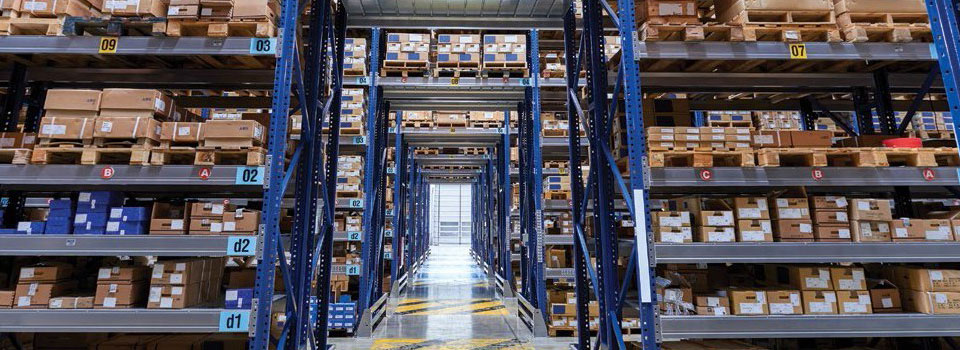Keeping the customer satisfied is crucial to the success of all businesses, large and small. But many small to medium-sized enterprises (SMEs) simply don’t know how to meet today’s pressurised customer service challenges. It all comes down to effective supply chain management.
Customer Satisfaction: Why SME’s Supply Chains Can Fall Short
In our capacity as a supply chain consulting partner for small to medium-sized enterprises, clients often ask us to investigate why their customer base is declining. In many cases, we find the problem is due to customer service issues arising from poor supply chain management (SCM). Here we examine four aspects of SCM that SMEs in particular struggle with.
Inventory Control
Having the right inventory in place at the right time is one of the biggest challenges facing SMEs. An inability to fulfil customer orders due to inventory shortage can cost an enterprise dearly – especially when it comes to its public image.
Inventory management problems arise due to:
- Lack of warehouse space
- Too much of the wrong inventory
- Not enough profitable stock
- Conflicting objectives among the various business functions of the enterprise.
Here are some solutions to these problems:
- Free up warehouse space by getting rid of ineffectual inventory and avoiding overstocking
- Choose your suppliers carefully by examining their track records and as much as possible try to avoid those with long and unpredictable supply chains
- Make better use of technology, such as SaaS and cloud computing, to provide end-to-end supply chain visibility
- Dedicate human resources to cross-functional supply chain management, specifically to develop sales and operations planning programs (S&OP) that will improve inventory management and optimise stock levels.
Procurement
Large businesses are favoured by suppliers purely due to the sheer volumes of orders. Smaller enterprises just do not have the clout to create the necessary leverage and are invariably at a disadvantage, unless suppliers or partners are also small businesses.
With procurement costs representing as much as 60 percent of a company’s overall supply chain budget, it is imperative for SMEs to focus on ways to reduce these costs and improve performance.
It is also essential for SMEs to build successful relationships with their suppliers and to identify those which underperform. With your suppliers on your side, you will have fewer delivery delays – and happier customers.
Finance
Unlike large companies, SMEs have limited access to loans from banks and financial institutions. Most mid-size entrepreneurs end up borrowing money from friends and family and using savings to set up their businesses.
Additionally, many SME owners are financially illiterate and have no way of understanding the ins and outs of other complicated credit facilities. They are forced to rely on traditional banks, which since the economic collapse of 2008 have been reluctant to extend loans for untested business plans.
Because they have little standing in the marketplace, SMEs are often forced to pay procurement costs in advance or at time of delivery, whereas their clients, usually large organisations, demand 30-90 day payment options.
For one or other of these reasons, or a combination of them all, many SMEs struggle financially in the initial years after their launch. Quite a few go bust.
In a bid to give SMEs a better chance of surviving, the concept of Supply Chain Financing (SCF) is rapidly gaining ground. SCF is essentially a financial agreement between buyer, seller and a financial institution which helps businesses free up capital trapped in supply chains. It allows the supplier to get paid earlier and the buyer to hold off the payment for a longer period. A win-win situation for all, including customers.
Going ‘Green’
While large international companies are leading the way in ‘greening’ the supply chain, all enterprises, big, medium-sized and small, are being scrutinised for their ‘green’ practices – be it types of transport used, sizes of shipments, packaging or where warehouses are sited.
One of the leading lights is Swiss-based Nestle, which has some 700, 000 farmers around the world linked to its food supply chain. The world’s largest food and beverage company says it has adopted a “lifecycle” approach, in which all products are examined at every step of production, taking into account social, environmental, economic, and animal welfare concerns, among others.
It is, of course, impossible for SMEs to compete on this scale—nor should they be expected to—but surveys consistently show that consumers, in general, have a more positive image of companies that support social and environmental efforts even at very local level.
Besides having a positive impact on potential customers, ‘greening’ the supply chain can have financial spinoffs as well. Production costs, for example, can be reduced by cutting down on packaging, limiting shipping, taking hazardous materials out of the supply chain and reducing waste.
SCM: An Essential Weapon
SMEs may be lagging behind large organisations when it comes to Supply Chain Management, but more and more are coming around to seeing SCM as an essential weapon to improve their competitiveness in the marketplace—and for helping to keep their customers satisfied.
If you’d like some help with supply chain issues, whether they relate to inventory, warehousing, freight, or customer services, Dawson Consulting is here to assist you. Contact us today and speak to one of our team members.




